Affiliate links on Android Authority may earn us a commission. Learn more.
How to empty trash on your Android phone or tablet
An Android phone or tablet has a lot less storage capacity than a desktop or even a laptop computer. This makes it an urgent matter to keep your device clear of files you no longer need. The way the Android OS deals with file deletion accounts for this lower storage capacity. But keeping your system healthy isn’t the only reason to delete a file. Sometimes security is the primary concern. Fortunately, there are a few ways you can permanently delete files off your device. Emptying the trash on your Android phone or tablet is not as centralized or streamlined as on a Windows or Mac OS PC, but it’s good to know how to do it when the need arises. Read on for a full discussion.
QUICK ANSWER
To empty the trash on your Android phone or tablet, download and install the free Files by Google app from the Google Play Store. When you open the app, you will be able to move files to Files by Google's Trash. Select the files you want to permanently delete and then open the Trash tab in the app. There, you will be able to permanently delete one or all of the files in the Trash.
JUMP TO KEY SECTIONS
Does Android have a trash folder?
No, the Android OS does not include a Recycling Bin like Windows. Usually, when you delete an item on an Android device, the data is not actually removed. Android marks it as a deleted file instead. The data will stay on your device for 30 days before being deleted, or sooner if the storage space is needed. Individual apps do have trash folders that can be emptied, and the System Settings app will have a Trash section for a few apps and for duplicate files. It’s a little more work than on a PC, but you can do it.
How to empty trash on Android
There are a plethora of different Android phones and tablets on the market, with varying features and capabilities. They do not all use the same version of Android. Also, manufacturers tend to make changes or additions to the Android OS to enhance their branding and to make the phones unique. For these reasons, your Android device might act differently from the one described here. These directions were created using a Galaxy Z Flip 4 by Samsung, running Android version 13. To begin:
Open your Settings app and tap on Battery and device care.
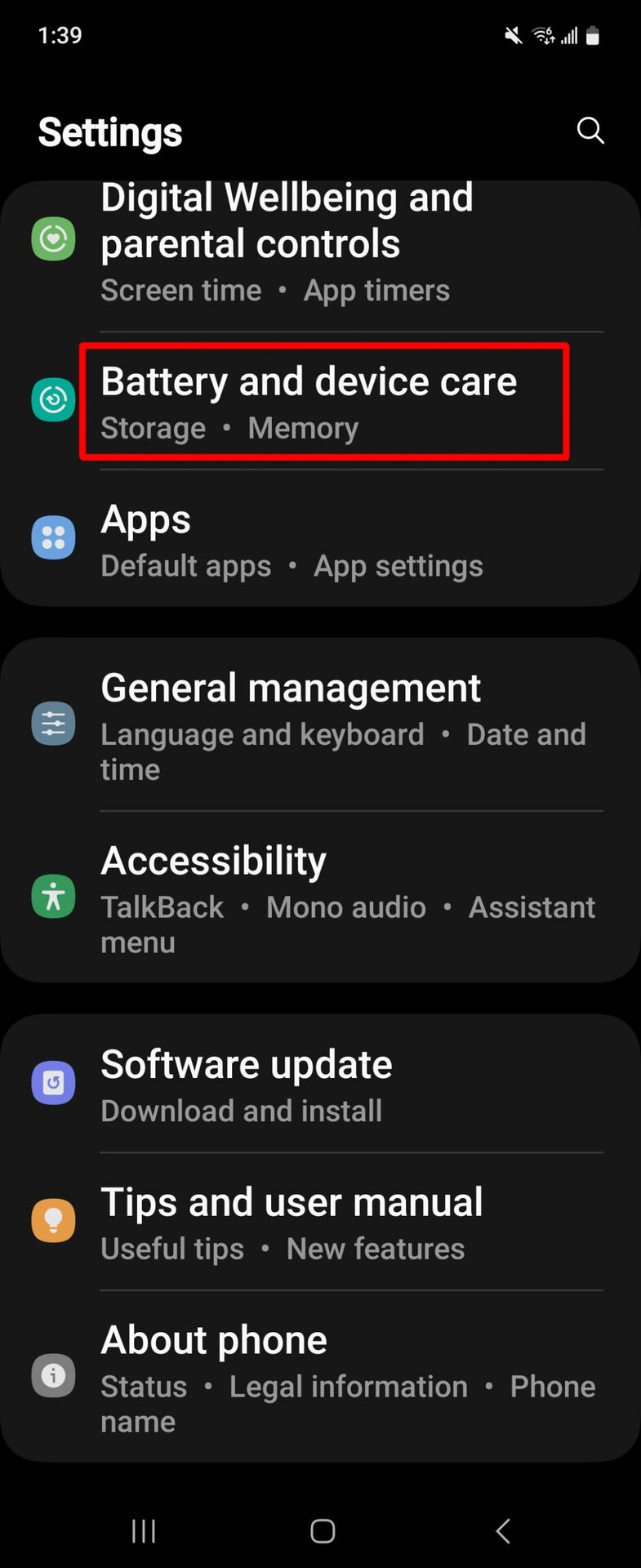
Tap on Storage.
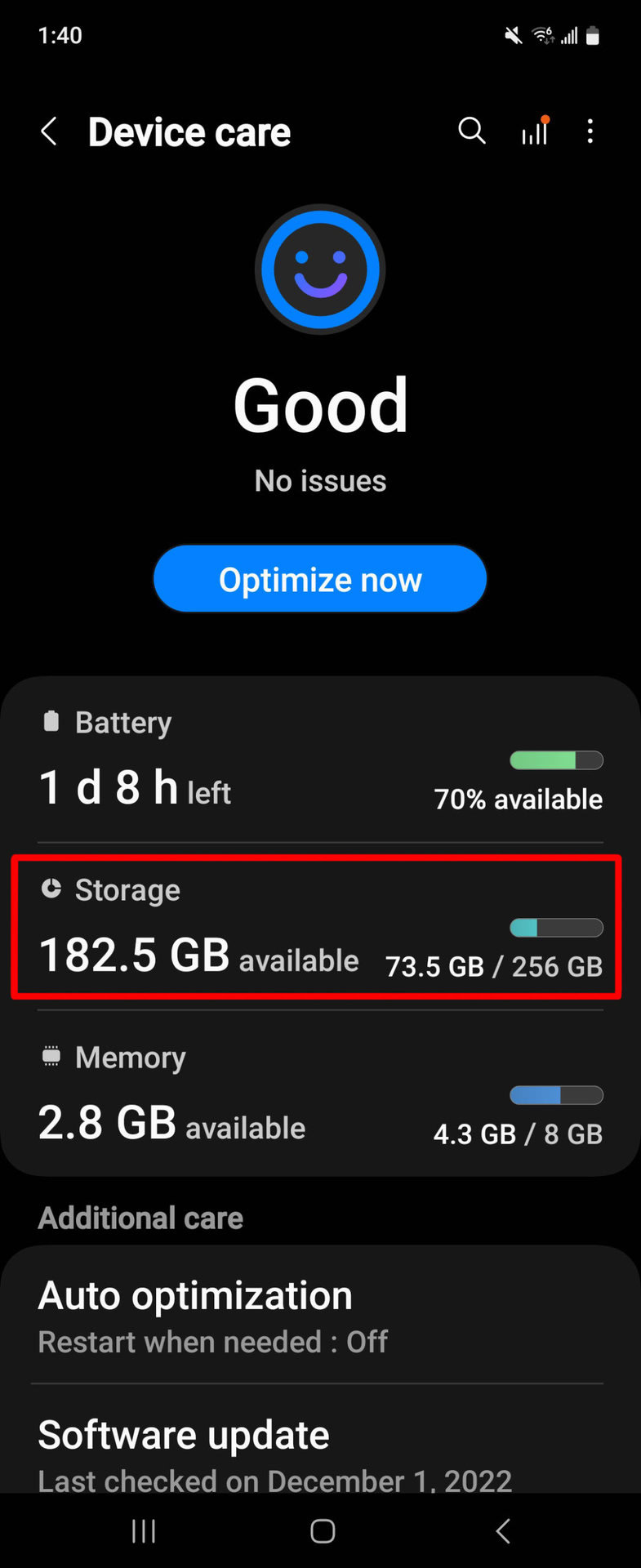
The Trash section will show which of your installed apps have trash that can be emptied through the Settings app. Tap on the app you wish to empty.
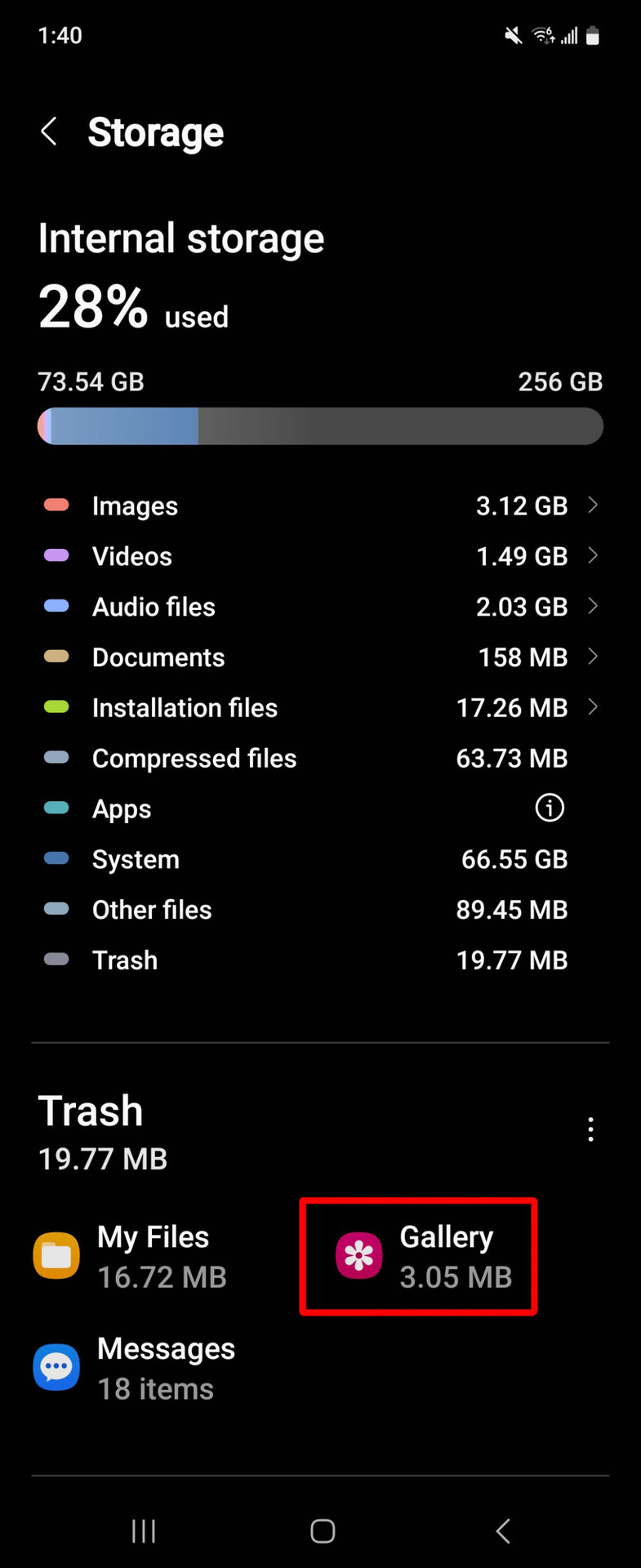
You will see a notification that deleted files are permanently deleted after 30 days. To delete them immediately, tap in the three-dot icon in the upper right.
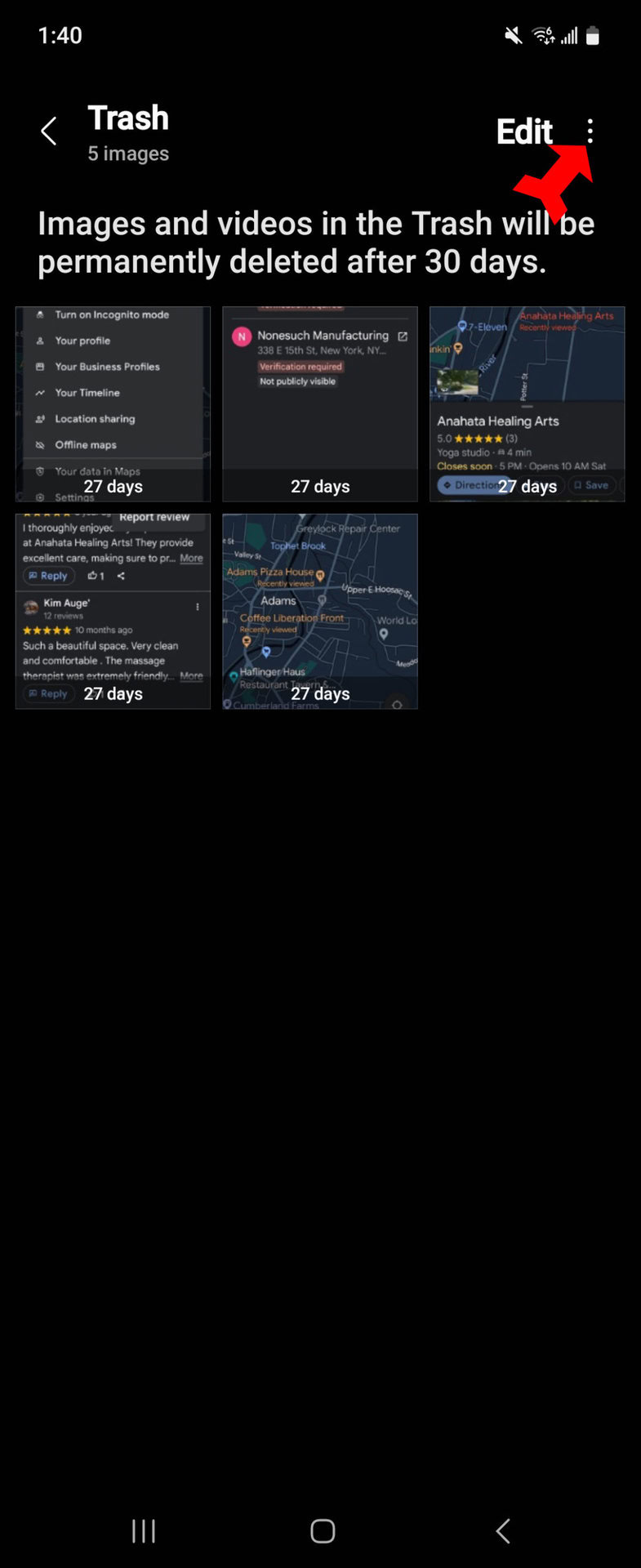
Tap on Empty.
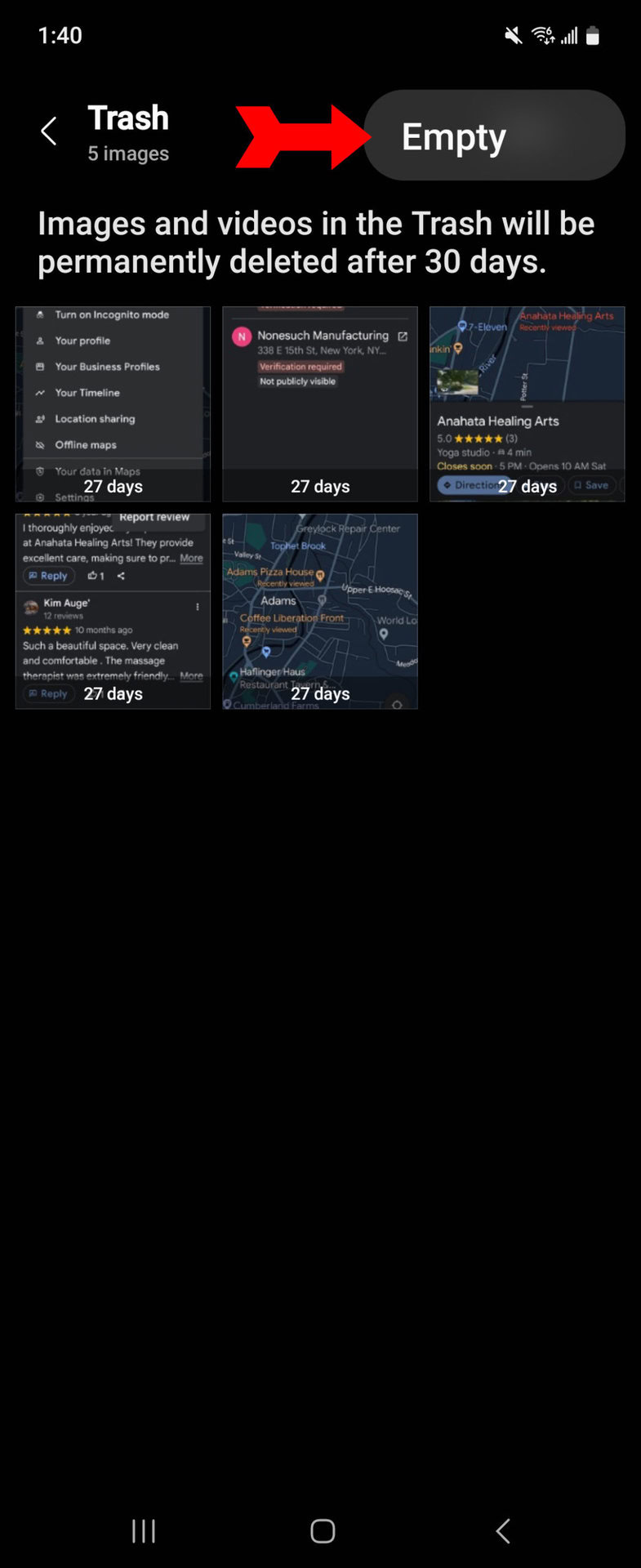
Confirm the deletion. The files are no longer on your device.
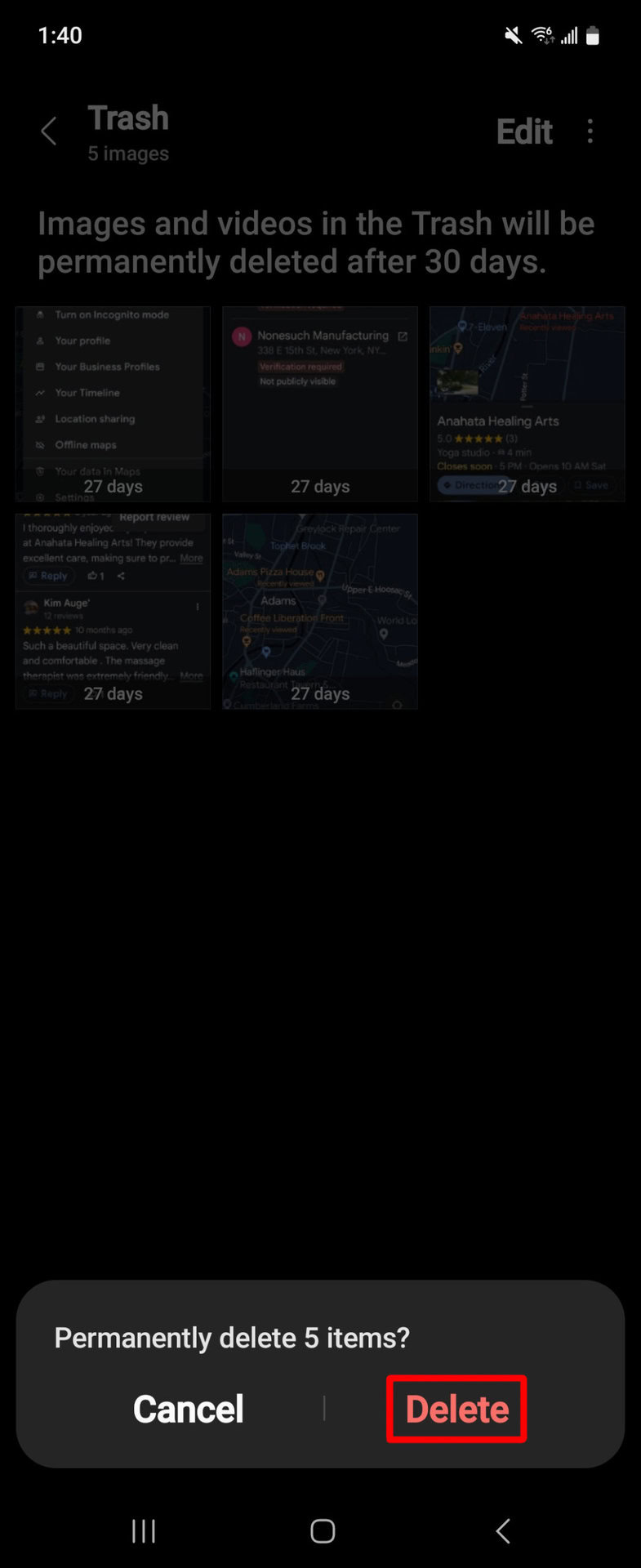
How else can I empty the trash on my Android device?
Files by Google
Google makes an app called Files by Google with which you can move files from any app to Files by Google’s Trash and then delete it. You can also use it to share files with others. Here’s how to empty your trash using Files by Google:
Open the app and go to the Browse tab. Tap on the category from which you would like to send files to the Trash.
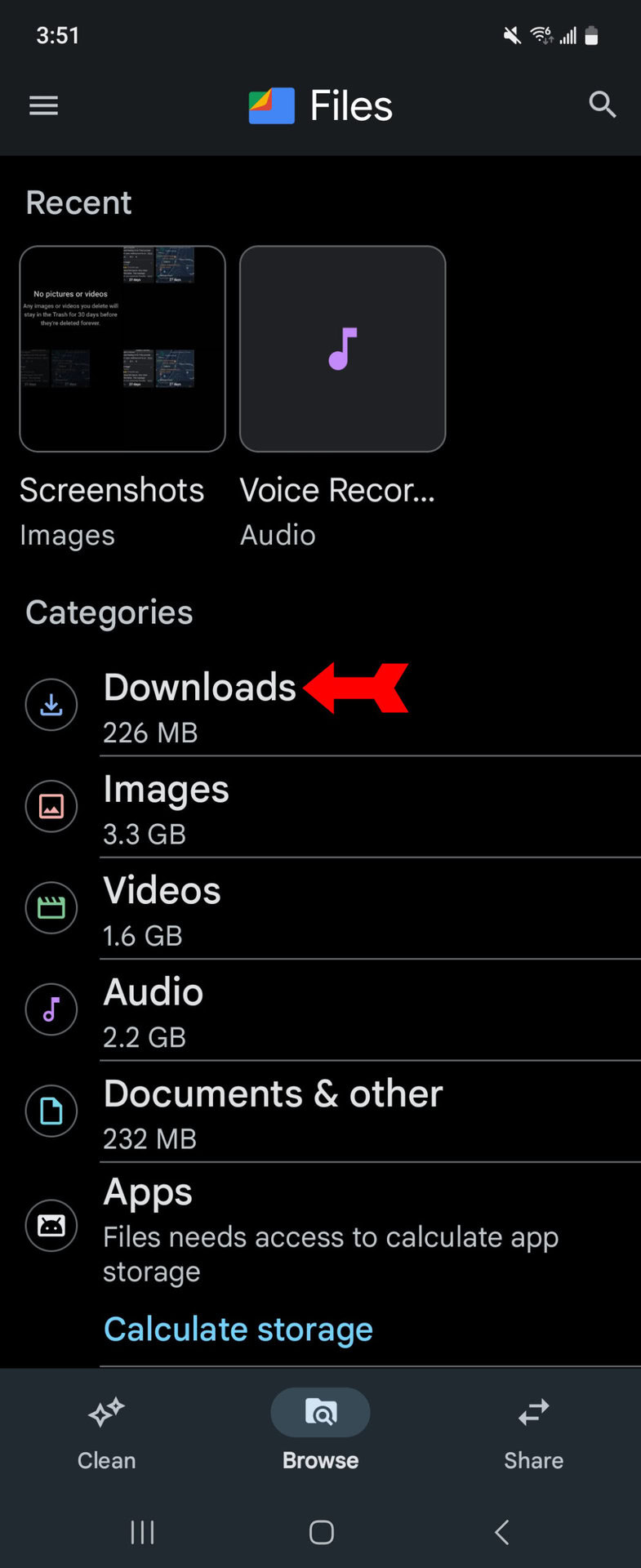
Choose a file to delete and tap on the three-dot icon to the right.
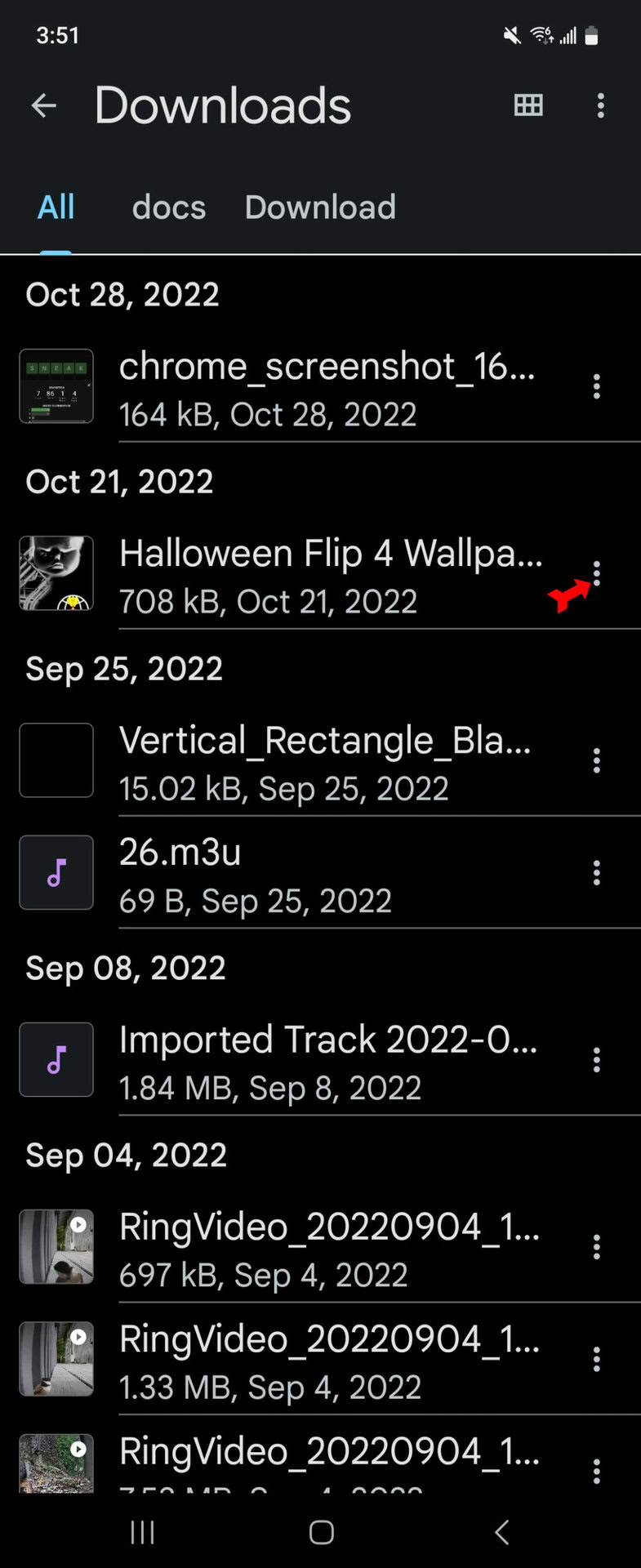
Tap on Move to Trash.
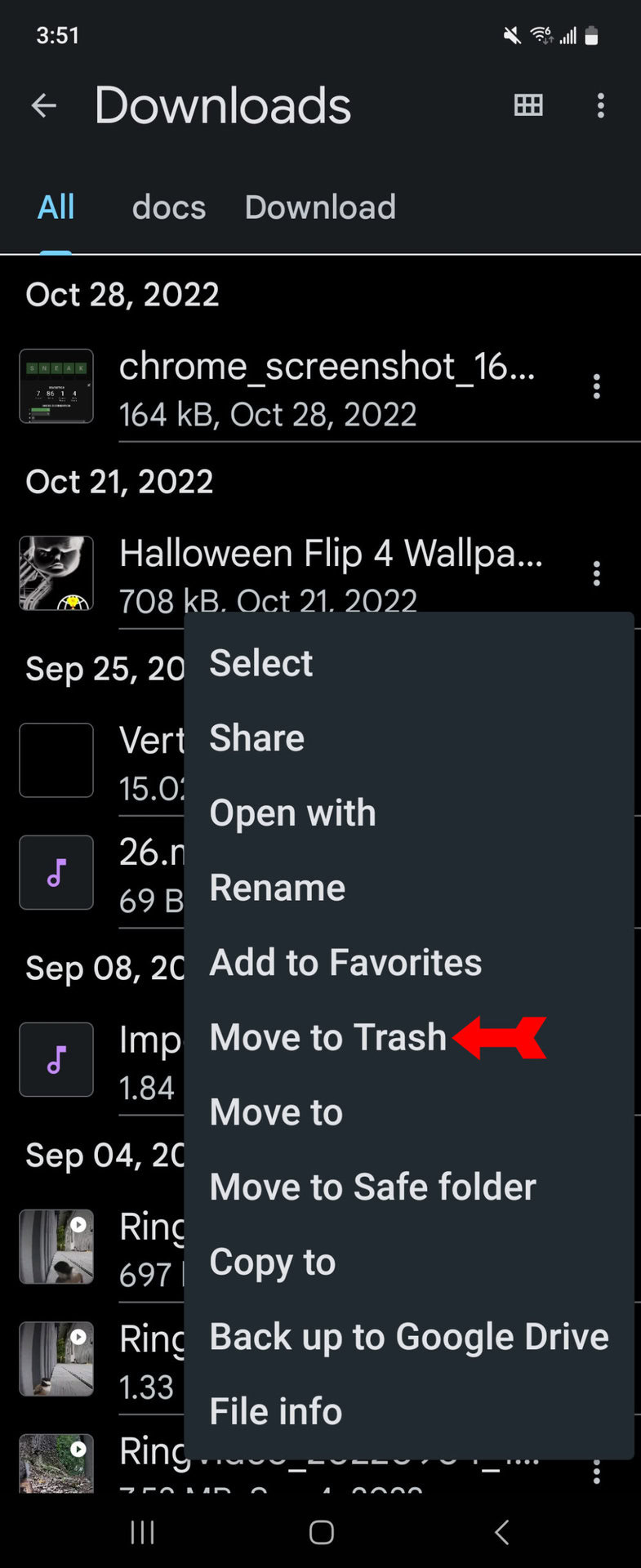
Confirm the action by tapping on Move 1 file to Trash.
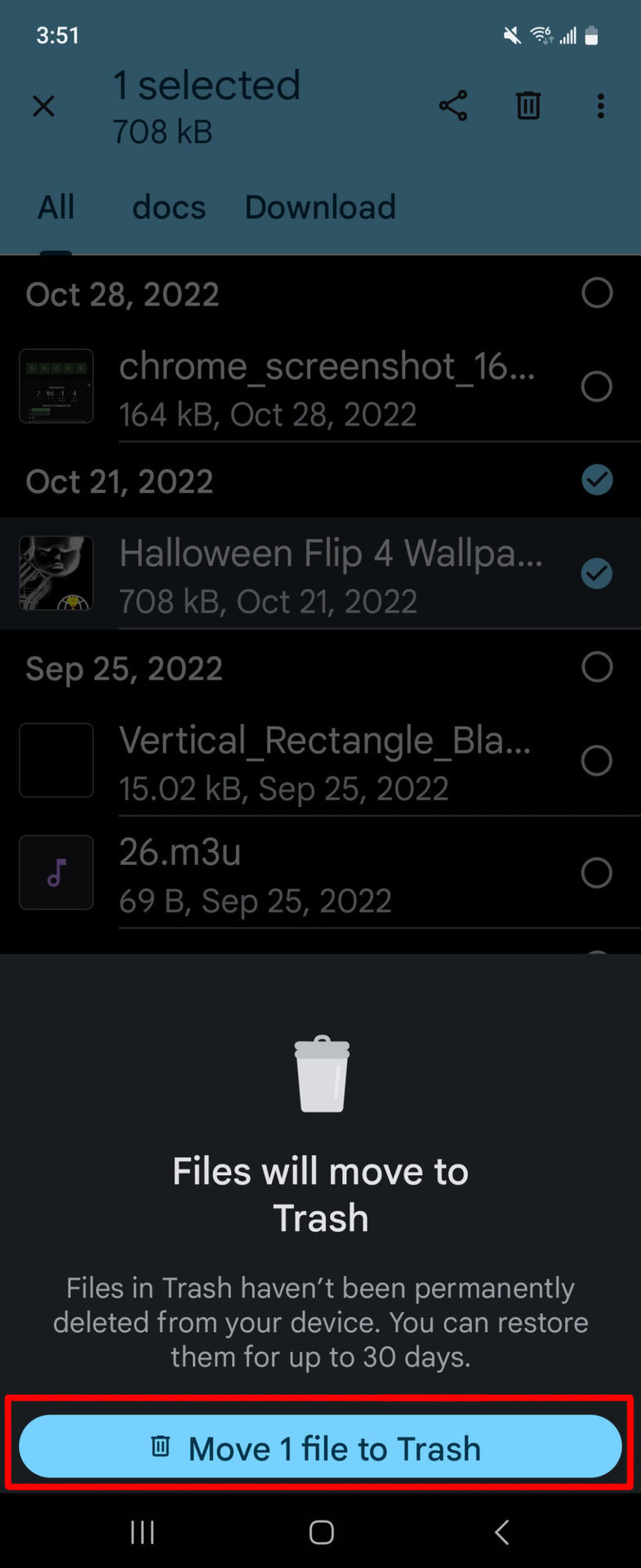
Now tap on the Clean tab and tap on the menu icon at the top left.
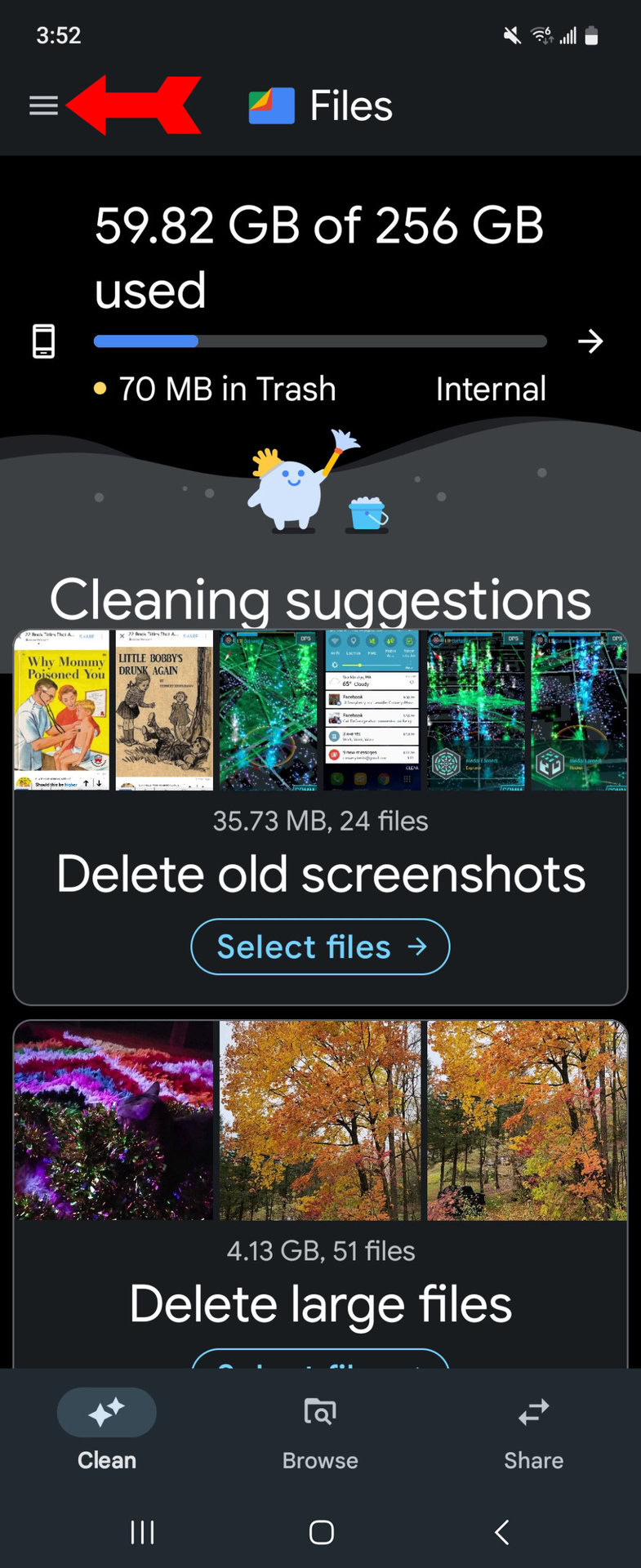
Then tap on Trash.
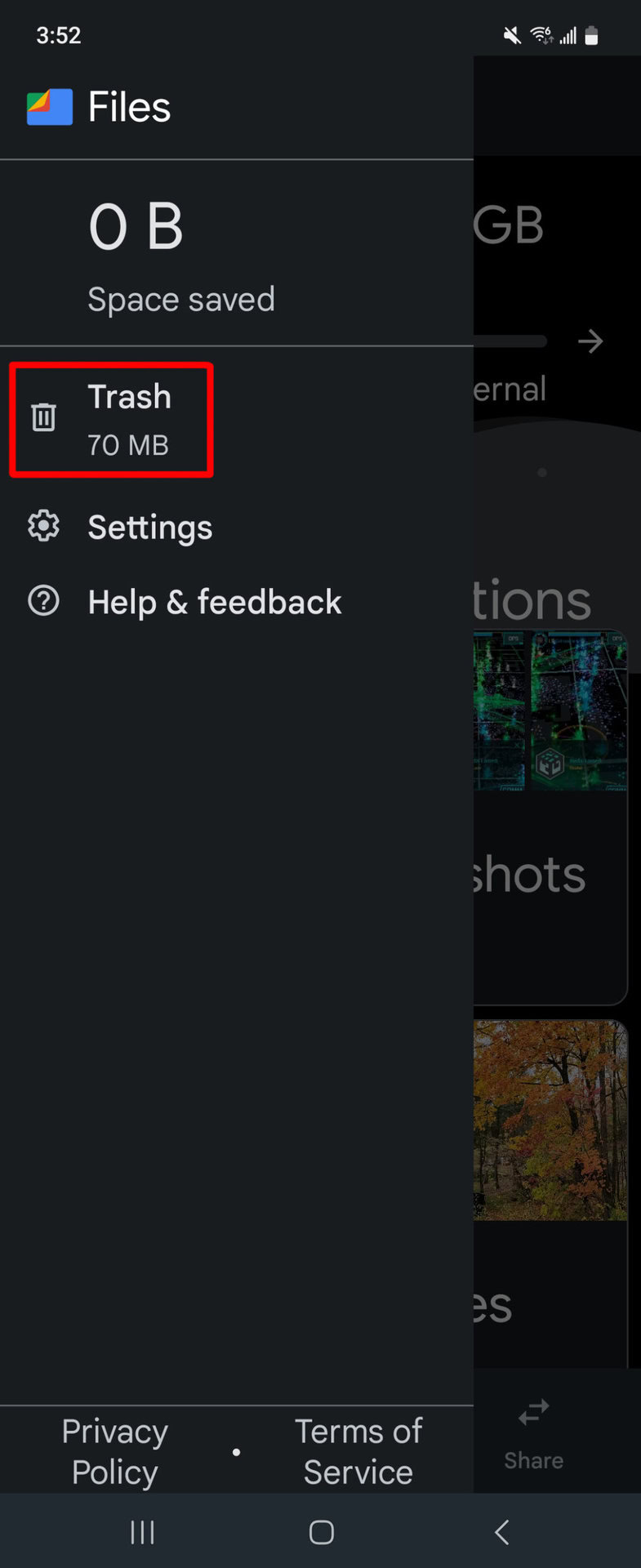
You can choose individual files to delete or use the All items checkbox at the top to select them all. Tap the Delete button.
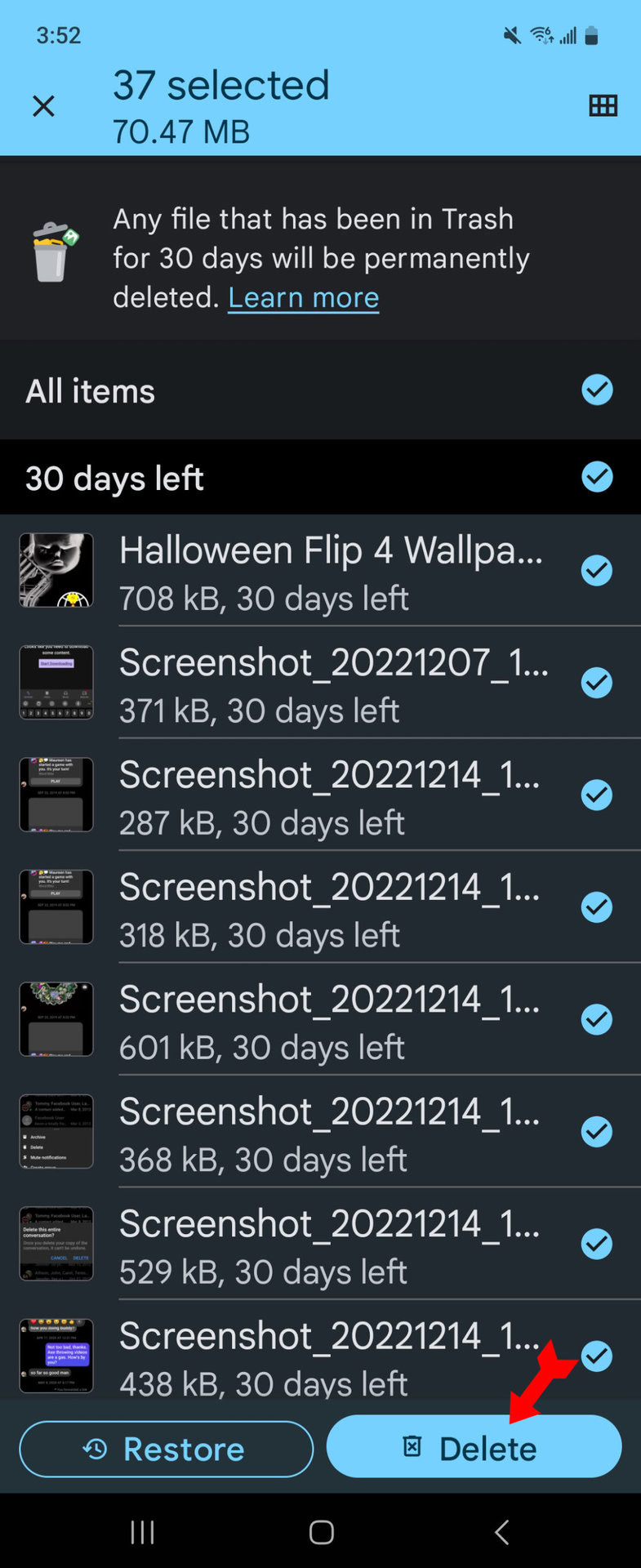
Since this is a permanent deletion, the app will ask you to confirm. Tap on the red Delete to finalize the process.
Individual app trash deletion
Without having to download anything else, many apps contain their own Trash section and allow you to clean out the trash to delete files permanently. Google Photos is a good example to demonstrate with, since many people use it and also because image files can be large, so cleaning out unneeded photos is a single step that can clear a lot of space on your phone or tablet. Here is how you can delete images in Google Photos:
Open Google Photos and tap on Library.
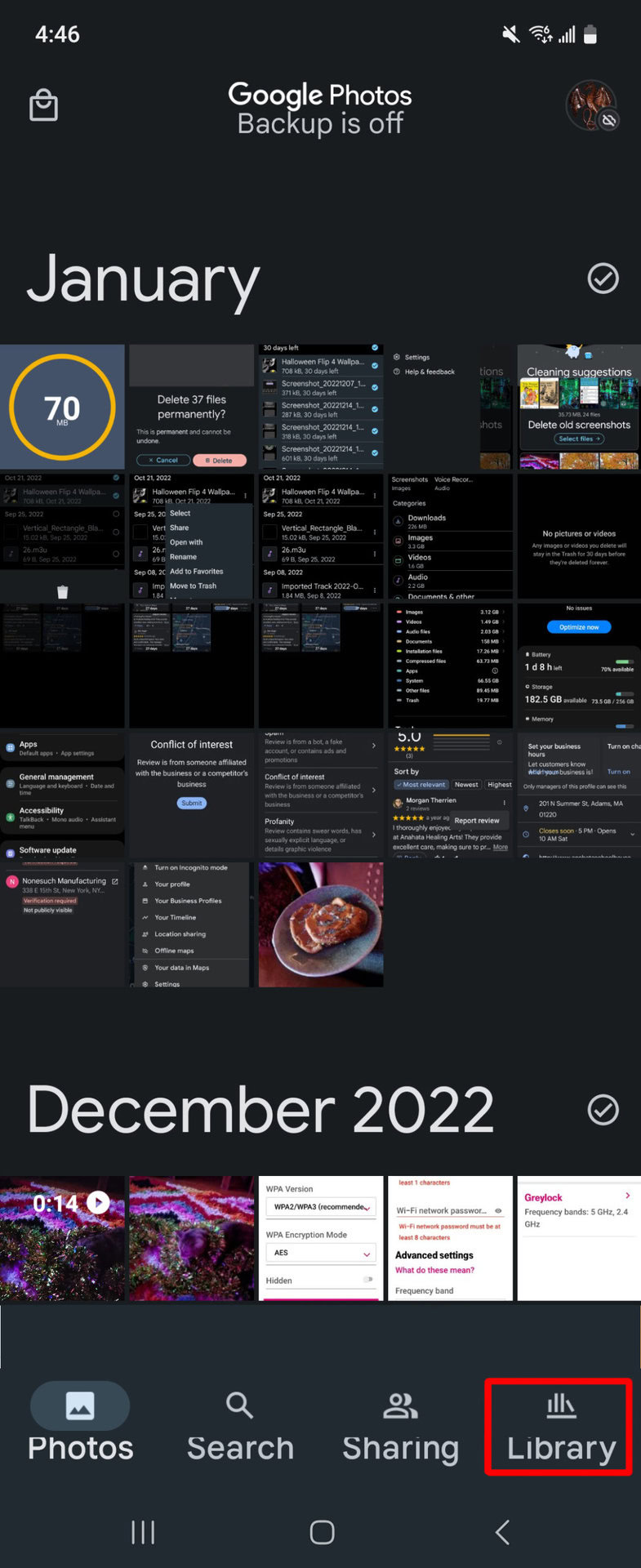
In the Library section, tap on Trash.
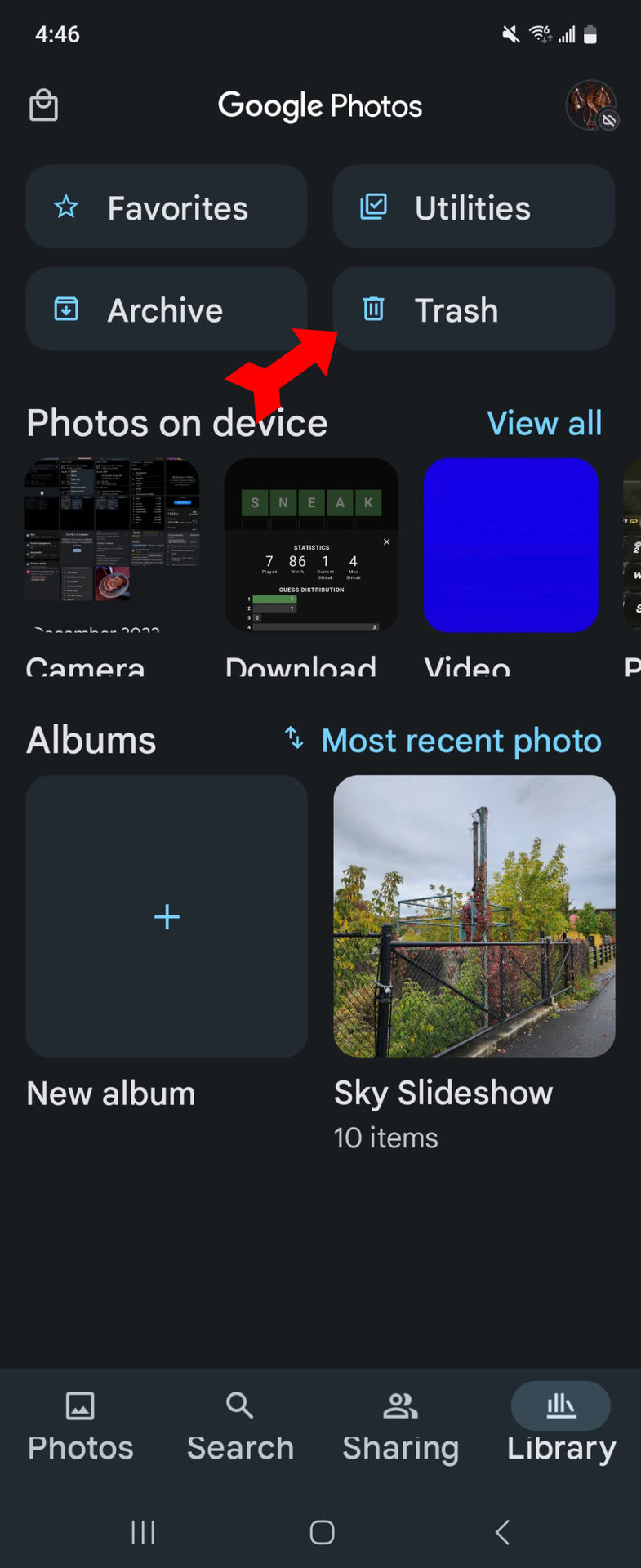
Select the files you want to delete. You can select all the images from a certain date if you prefer.
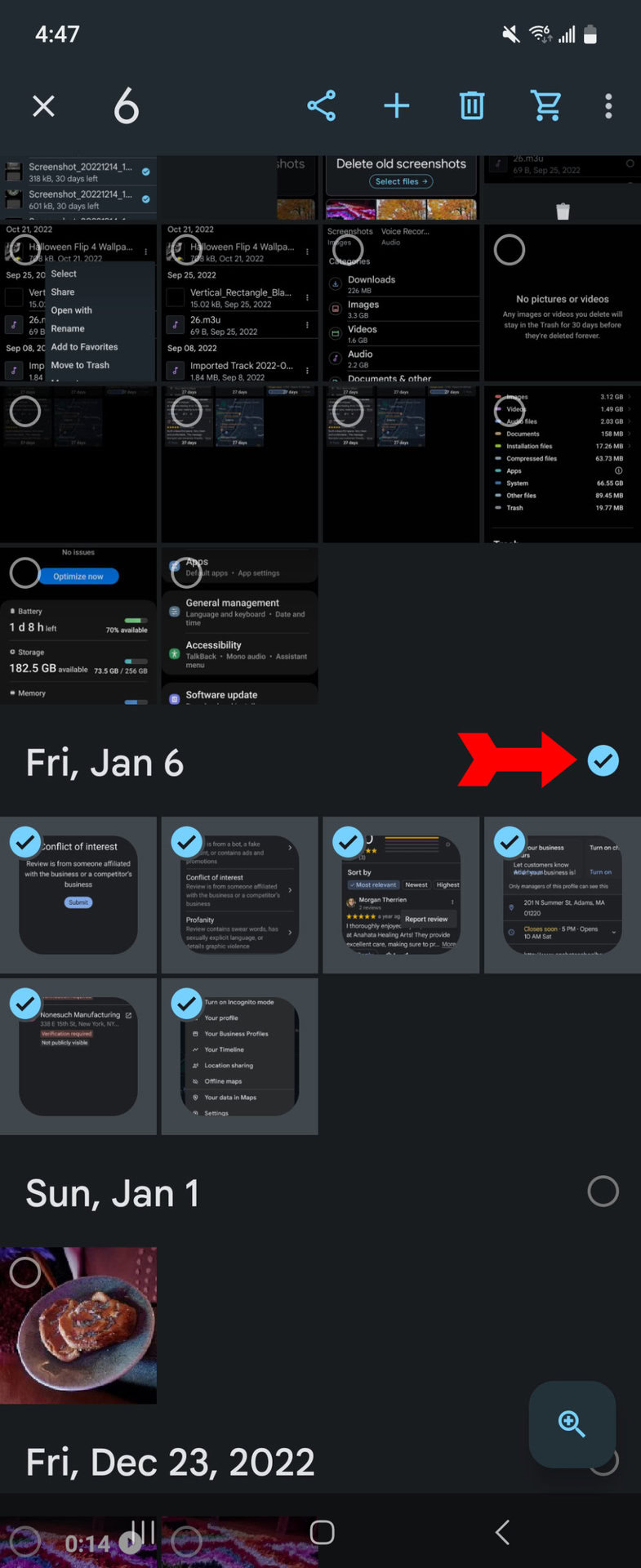
Click on the three-dot icon at the top right and select Delete from device.
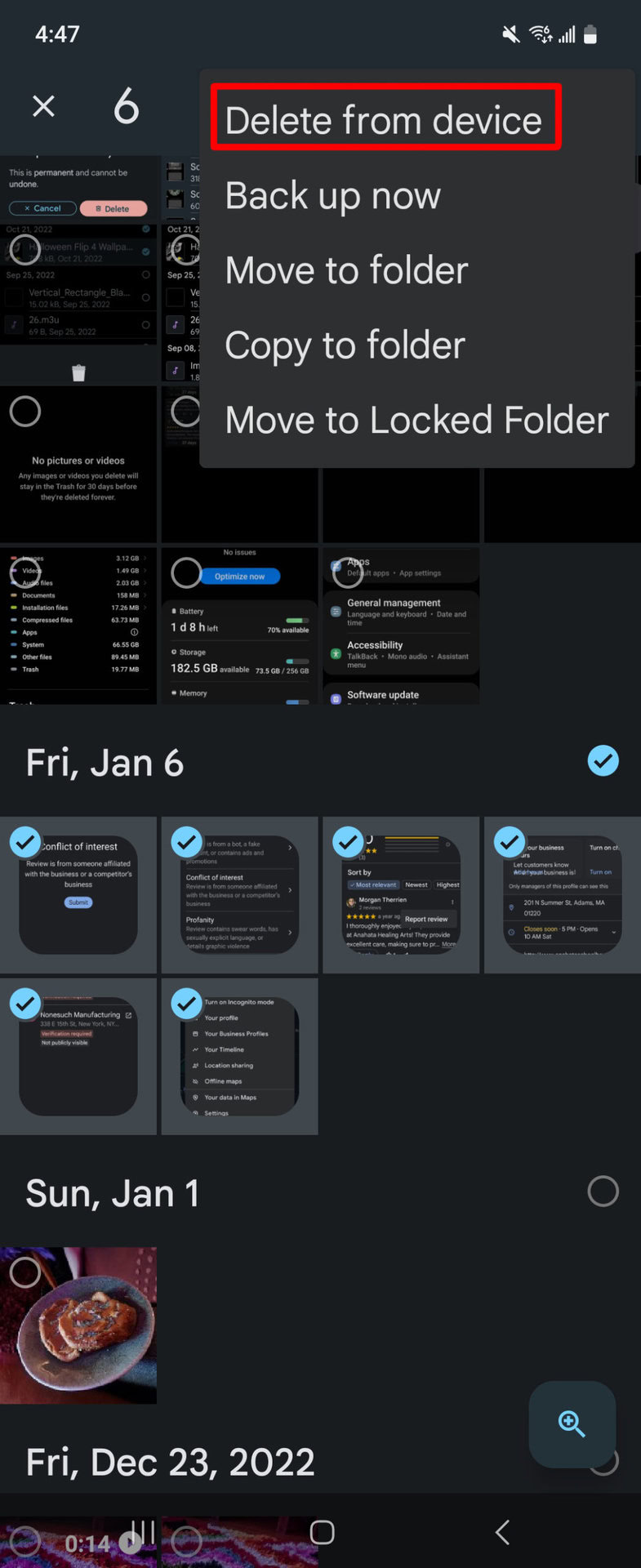
As usual, the app will ask you to confirm the deletion of these files from your device, since it is irreversible. The images are no longer on your Android phone or tablet.
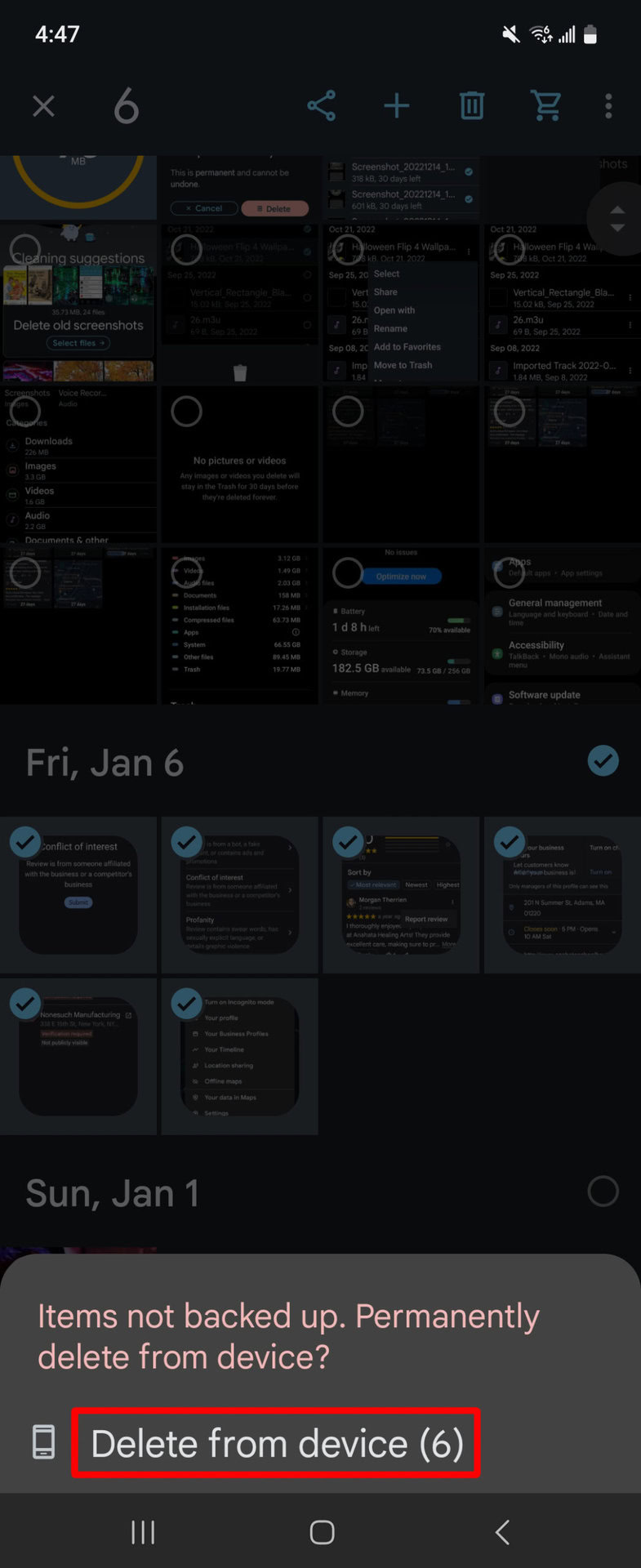
FAQs
It’s a matter of personal preference, except for two situations: if your device is slowing down due to the number of files on your system, or if you have a file that contains sensitive information that is better deleted as soon as possible.
No, you cannot. This is why Android holds onto deleted files for 30 days, to give you a chance to recover them. Once you permanently delete it, the file is gone. There are apps that claim to be able to recover files after a permanent deletion, but they may not recover the entire file. And if the section of the phone’s memory that held the file has been overwritten already, there is nothing that can be done.
Files by Google features a Safe Folder that you can send files to instead of to the Trash. No one can delete files in the Safe folder as long as they stay in there.